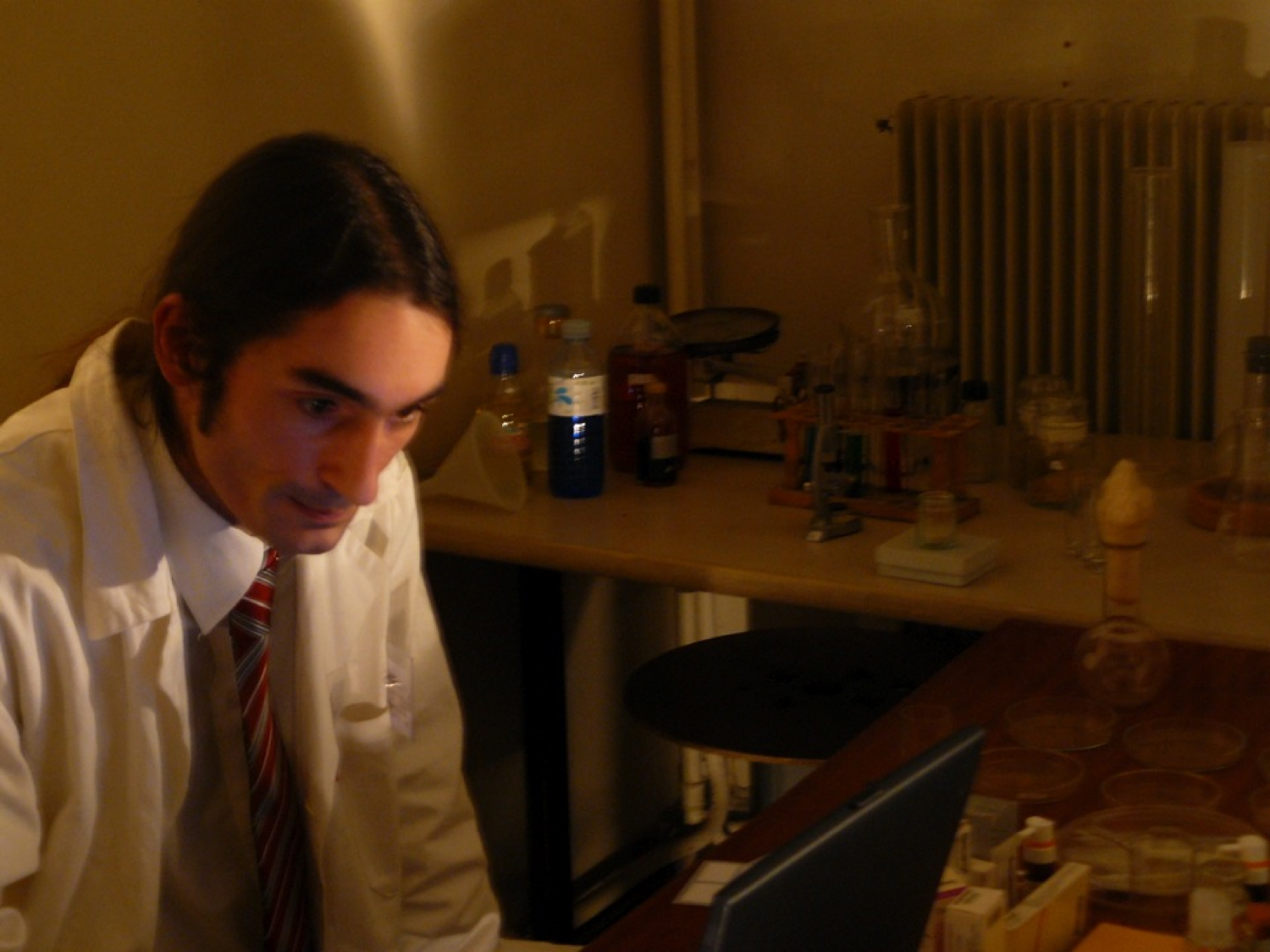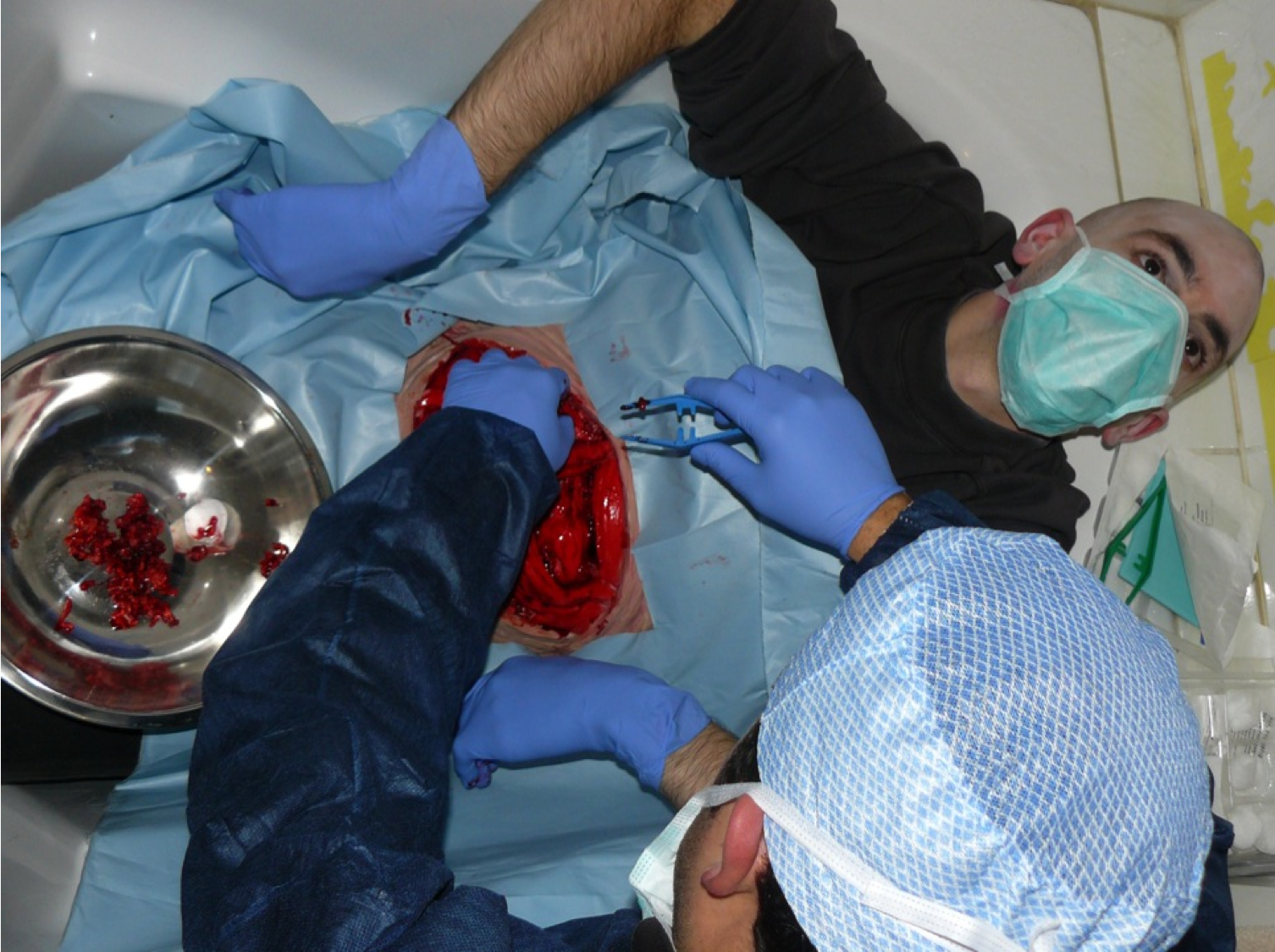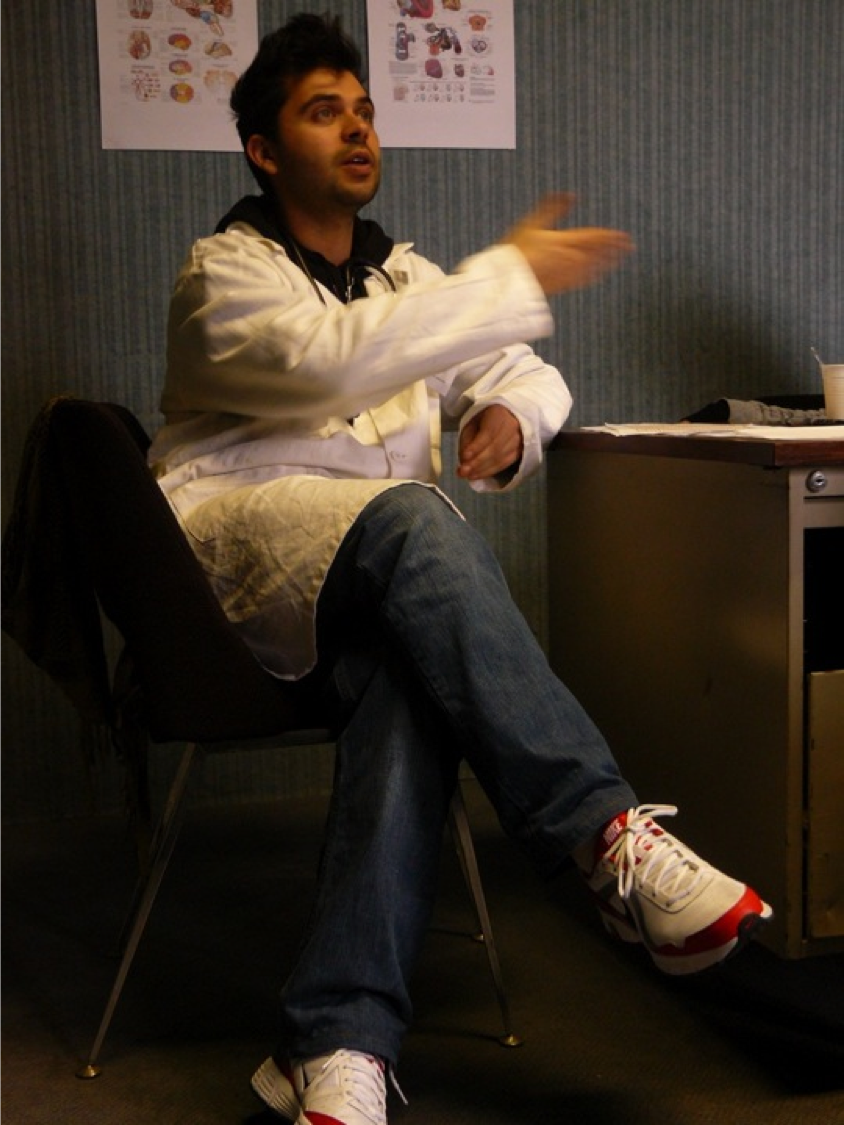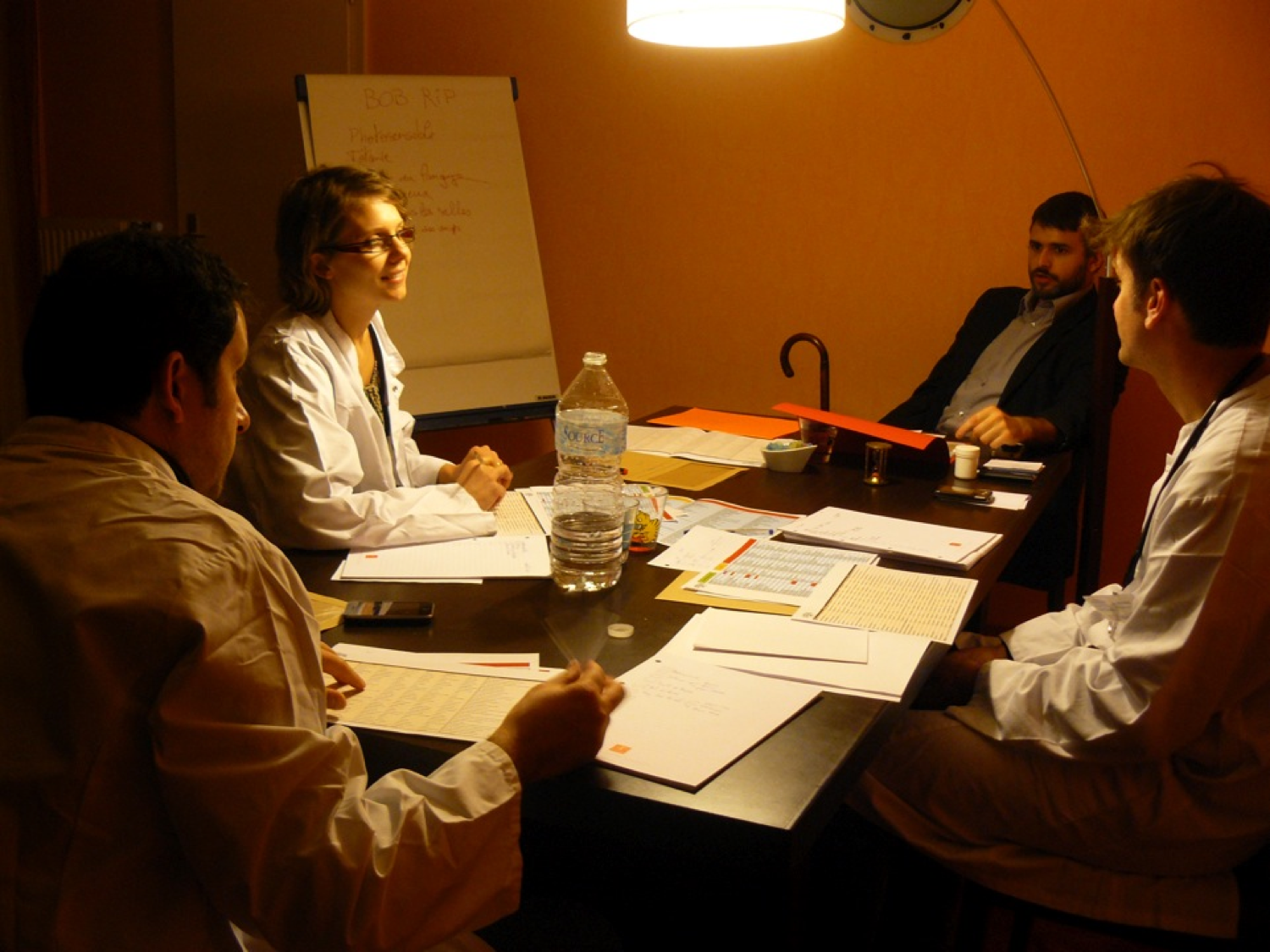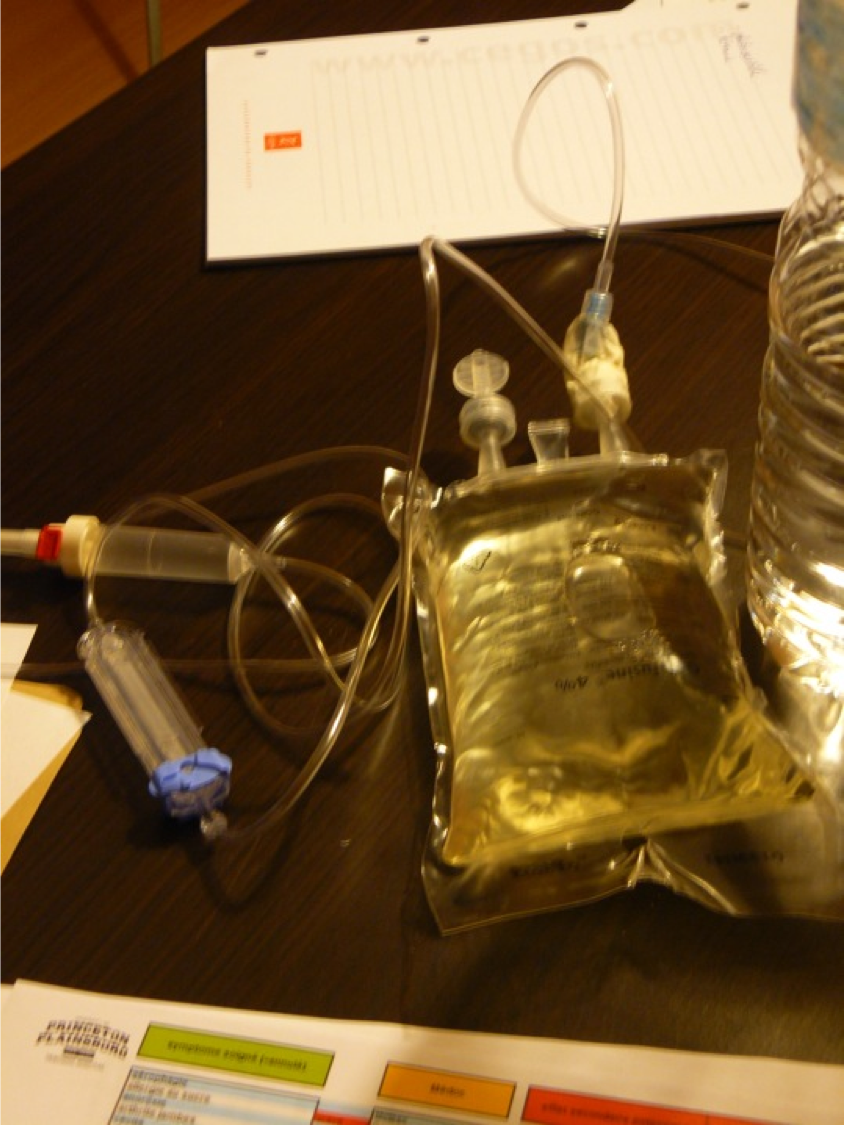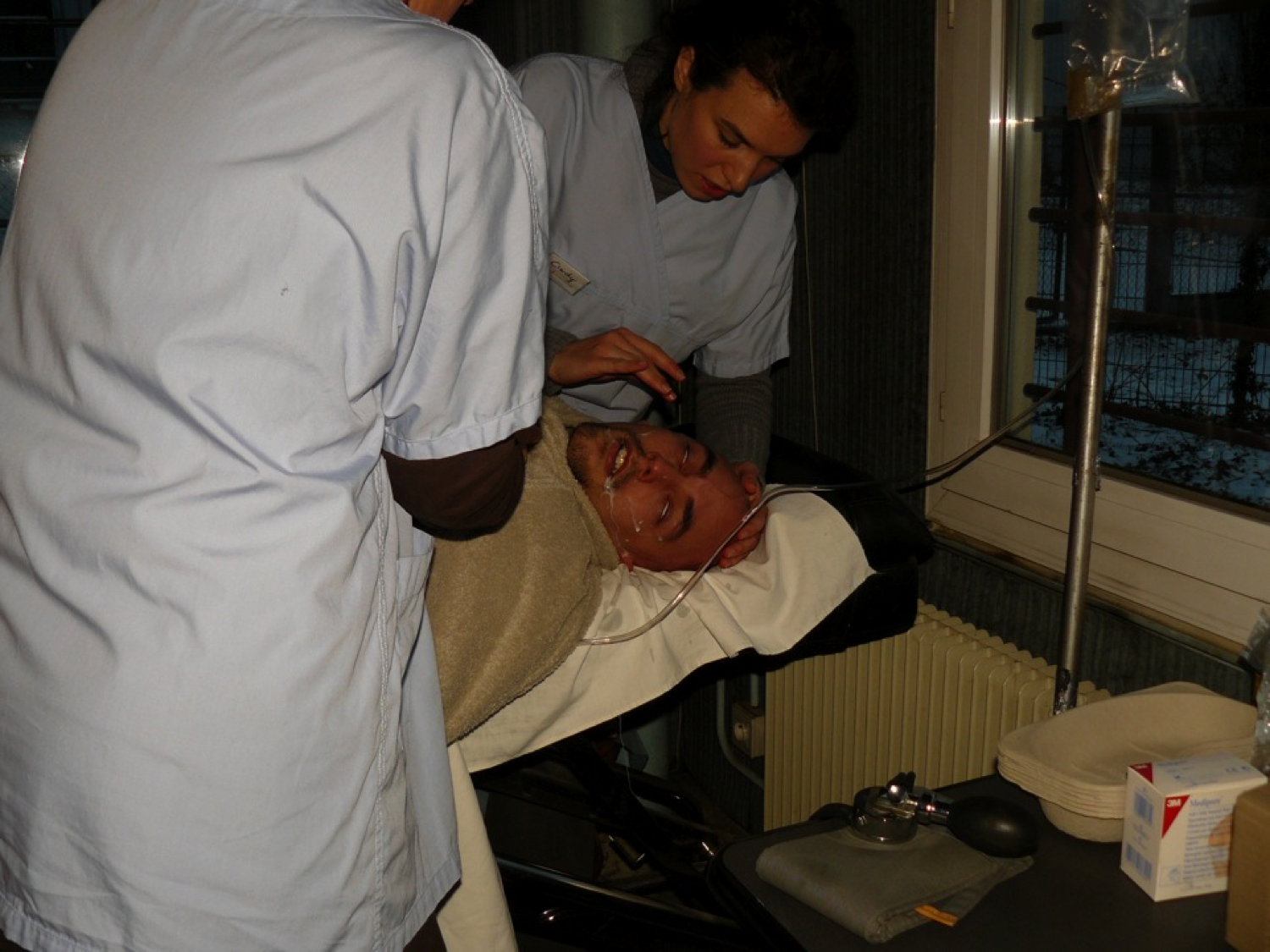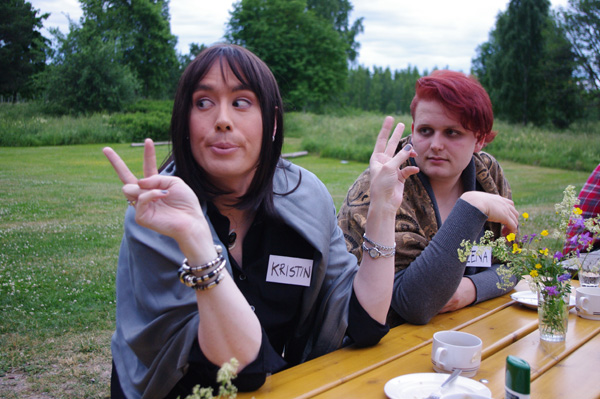Translation : Leïla Teteau-Surel
Season 1
With role-playing games you can be whoever you want. Or at least that’s what you’ve been told. But there is one evident truth : you will never be credible playing a barbarian if you only weigh 35 kilos. In particular, for certain professions eg a doctor’s role, it will be difficult to simply pretend. A doctor has an operation room, assistants around, a scanner. At least he needs a paperboard, don’t you think? But above all a doctor can talk for hours and hours with a colleague by using complicated terms that wouldn’t mean anything for the rest of the world.
So how can we manage to get believeable role-playing doctors if the players have no knowledge about medicine? Would anyone be able to play a credible doctor if we can give the means to do so? That was the question at the beginning of this project.
Our first inspiration was the TV show ‘House M.D.’ by David Shore. Episodes often follow the same pattern. The health care given to the patients is central; the hospital is not just a setting, in this setting people practice medicine to save lives.
General pattern of a ‘House M.D.’ episode
A standard episode of ‘House M.D.’ happens as follows: During the first minutes a patient realizes he has an original and unexpected symptom. House accepts the case because he finds it interesting or his superiors force him to do so. He asks his team for the establishment of one or more diagnoses and he writes the symptoms on a white board.
Then House takes decisions that are not designed to cure the patient but give them more information. Often the patient has a series of new symptoms perhaps more and more impressive during the episode, despite the actions of the doctors trying to stabilize him. House has to contrive the diagnostic system because he finds out that the patient or a family member lied, has a religion prohibiting certain treatments or because one of his colleagues questions his sanity. At the end House finds the problem when discussing a totally different matter and cures the patient.
Most of the time parallel storylines related to other characters echo the patient’s story. If he became vegetarian to please his girlfriend, House asks all the team about their views on the topic. He pushes everyone to face their paradoxes. At the end of the episode everybody has a clear opinion on the question: Should you become vegetarian to please your girlfriend?
The ‘House M.D.’ universe has strict rules. If you want to have players improvising in this way you need to use a trick. House M.D. – The larp, is made of several independant scenarios organized several times each with different players.
Come and play!
« Straight after you walked through the door you get a white coat and a stethoscope, to help to make the switch into your character. You sit down with your colleagues, you’re given a coffee and you listen to the briefing while receiving different documents useful during the game. Let’s go! » – Matthieu Nicolas
For the first sessions of the game the goal was to test the rule system for medicine. In order to not disturb the experiment the decision was to not put anything else in the game. The whole game would be centered around an enigma.
Before the game players receive little information. They know that the game is a trial. They know they would have to solve a problem and that being at ease with logic exercices would help. They know too that before the game they will go through a moment when they will learn ‘medicine’ and a presentation of the rules for improvisation.
Players generally arrived without any preparation. Straight away they were taken into a one to two hours training session. The first aim was to learn how to improvise in an american TV-show way. Then to have a crash course in medicine : to fit several years into a few minutes. This preparation never changed, even during the following sessions where the players had pre-written characters with life and personal goals determined by the organizers.
Playing like characters in a tv show
The rules changed according to the show but some tricks were always used at one point or another. Some of them appeared to be easier than others for players to use during an improvisation. We explained them beforehand by doing some exercises to make them familiar.
Players had as an instruction to not discuss personal matters if they were more than two in the same room. They should not disturb two players having a conversation to give them the opportunity to talk about their personal stuff. The idea was to multiply scenes around a specific topic. If Stacy is pregnant she will be able to tell her colleagues – House too – one after another which makes 3 different scenes. Everyone could express their own view on the topic.
In real life, we are often told to handle conflict through dialogues. TV shows give good examples of points of view confronted with each other. In 45 minutes the characters can easily solve a dilemma over which ordinary human beings would fight, sometimes for years. At the same time an episode is made of a dozen of scenes separated with ellipses. If we take a closer look we can see that these scenes never end in the way a normal discussion would.
Stacy explains to Michael that she is pregnant. He gives her a frightened look. End of the scene. The next scene shows the two characters 30 minutes later in the same episode and then Michael explains why he is afraid. This is how you can ‘savor’ a conflict. By making two clearly separated scenes with a situation that in real life would be only one scene but much longer and confused.
In the game players were told not to reach the end of the scene when they thought they would exhaust all the dramatic potential of the topic but as soon as they had expressed an idea and got some dramatic intensity. This logic of slow progression in conflicts was made easy by a game that did not leave time to be bored. Indeed having the urgency of the patient to cure does not give any opportunity for rest to the doctors.
Freeplay
The concept of Freeplay appeared on the website www.electro-gn.com in a manifesto presenting it as the most efficient method to create interesting drama situations. The common meaning of « roleplay » is the fact to act as your character would by referring to informations given by the organizers. « Freeplay » is doing the same but with some freedom towards the information given by the organizers.
The first sessions of House M.D. – The larp were total improvisation without any character basis and this notion was not felt to be interesting. But during the following sessions where players had short characters sheets, freeplay enabled players to expand the game context and to make it different each time.
Diagnose the impossible
« You just have to put a new medical case in the game system, you plan the events, the NPCs and the settings you need. New stories can be designed on the basis of the rules, in a far quicker way than usual for a LARP scenario. » – Matthieu Nicolas
The different versions of the medical system – the basis of the game- are available online. You can find the link at the end of this article. We will quickly discuss about how it was used and the possibillities provided by this system. The aim is to enable players to discuss between themselves, after less than an hour of explanation, of a medical case and to solve it. Their dialogue has to be meaningful and look like a real discussion between two doctors.
In House M.D. – The larp, you will need to get rid of all your real medical knowledge. Forget everything you think you knew. A patient’s disease is reported and the patient will develop six symptoms in a random order. At the end he will probably die if he does not obtain the appropriate cure. But to succeed you will need to understand what the disease is.
Until now it seems easy : you only need to wait for the emergence of the six symptoms and to take a look at the big picture of diseases without making a mistake. Unfortunately symptoms are sometimes difficult to see. Some of them can kill the patient, more or less quickly. So you need to prescribe medication. It will have no impact on the disease but will calm the symptoms. As in the real world medical intervention could have side effects, occasionally disastrous, and looking very much like new and different symptoms; they will also disturb the diagnosis. Add that, as in the TV show, the patient may have forgotten certain things, is a child with an invasive family or who has a religion prohibiting treatments on Fridays, or that one one of your colleagues questions your decisions and you will have to run against the clock in a stressful way.
Dr. House, this genius
Hopefully House is there at every step of the diagnosis to help the team. He pays attention to ensure that everyone understands the rules even when they change during the game – which is possible. He also makes sure that the game progresses according to the players’ decisions. The organizer playing the patient reacts to the medication given and enables the evolution of the disease during the whole length of the game. The organizer playing Dr. House orchestrates everything.
As indicated above, players have to improvise their personal stories and try to handle the practice of medicine at the same time. It is not easy, especially if it is your first ‘House’ episode. But once again House acts as a director, pushing players to put aside the medical case and to respect the rule of the ‘two-players dialogue’ grouping.
Staging an American TV-show
To stage the decor and props of House M.D. – The larp, several people and organizations helped. That’s why it is difficult to evaluate the real budget of the game. Volunteers realized special effects and handled operations and laboratory tests. These different aspects were improved game after game.
To make easier the difference between scenes related to personal improvisation and those related to medical practice the space was divided into several zones with their own rules.
House’s office is the space elected to reflect on the medical case. That is the place where you find the paperboard and where House asks his team to make a differential diagnosis. In this space are available the necessary lists for the players to diagnose. They also have the medical file and their notes.
Some spaces are set aside for the practice of medical specialities. To access this spaces you need to follow a defined and specific protocol. For example : you cannot begin an operation without washing your hands, putting on your scrubs and preparing the patient.
Pass your degree and become a specialist
In addition to general medical rules each of the three players has a speciality. The surgeon is in charge of operating on patients to see what the internal problem is. The neurosurgeon does quite the same but it is more precise and he/she can ask questions to the patient at the same time. And the laboratory assistant is able to realize diagnostic tests to check which medicines the patient took in the past.
Every speciality has its own rule system that only the specialist understands. When he or she enters the space reserved for that speciality he or she orchestrates things instead of House. For the other players what the specialist does is indecipherable because it is impossible to guess the rules in a few minutes. However everyone must trust the specialists. They know their job. When the surgeon asks for a scalpel the other players know that there is a good reason.
Mastering the rythm
« We tend to forget that, like in a good board game, the rule is also there to convey an atmosphere, to frame a specific topic. If you constrain the action, the rules will create behaviour fitting the game world and give the occasion to live rather substantial experiences» – Matthieu Nicolas
There are numerous answers to the question : why do TV-shows always seem better than LARPs ? But the most obvious answer is : the rythm of a TV-show is mastered by the director. In a LARP everyone individually masters the rythm of his or her story. The organizer can influence the tempo but it becomes a subtle task.
Because the number of players is so low (3) and the game leads them to run against the clock, with a high level of tension fostered by regular indications from a dying patient, House M.D. – The larp offers a well mastered and dramatic intensity. What was intended to be a simple medical system opens up to a wider range of possibilities. The harmony between the rule system and the game’s atmosphere enables, after a long pre-game preparation, to simulate a professional practice in game.
To date 2 different episodes, played 5 to 6 times each, have followed the system and game House M.D. – The larp.
House M.D. – The larp
Years of production : 2010, 2011, 2012
Organizers : The organization eXpérience : more precisely Baptiste Cazes, Lucie Choupaut, Vincent Choupaut, Anne Garnier, Damien Lourme
Length : 4 heures
Budget : 200 – 300 €
Fee for players : 5 to 10 €
Number of players : 3 per game
Number of organizers and assistants : 3 to 5 depending on the game
Places : Paris, Strasbourg
Further information… (in French)
A review of the game by Matthieu Nicolas : http://www.gnetjeux.fr/?p=2349
Scenario of episode 1 : http://www.murder-party.org/sc%C3%A9narioth%C3%A8que/experts/dr-house-des-nouveaux-au-plainsboro/
Scenario of episode 6 : http://www.murder-party.org/sc%C3%A9narioth%C3%A8que/experts/dr-house-le-sens-du-devoir/
Website of the organization : eXperience : http://experiencegn.jimdo.com
Detailed rules and textbook case will be published soon on electro-larp…
